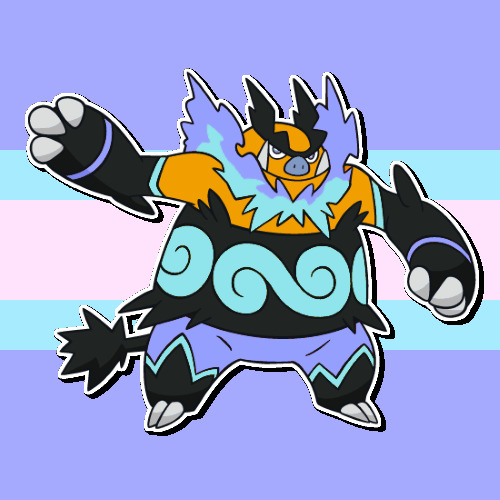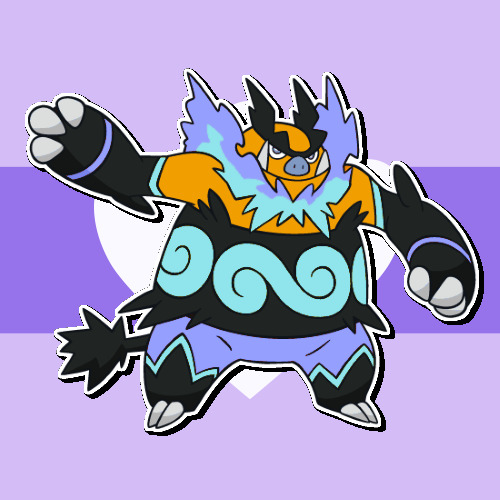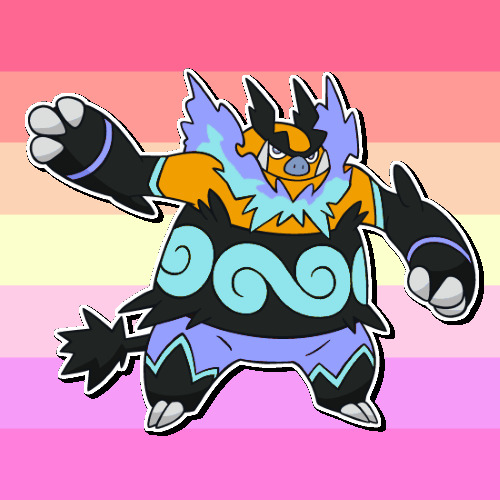#veneergender
Photo










The Tepig line loves MOGAI genders (6/6)
#eye strain#icon#pokemon icons#emboar#shiny emboar#syndeboy#syndegirl#transneutral#ultragender#veneergender#venusian#virusgender#volitogender#xeminity#xenogender#yes that is a xenogender flag
10 notes
·
View notes
Photo


Sentiogender flag!
The term already existed, but there was no flag. So as per request, I made one.
Meanings-
Grey, partial sentiogenders/gender itself.
Purple, describes how their gender works/feels.
Yellow, their experience/relationship with gender.
Light blue, flux (genders).
Blue, fluid (genders).
The vertical stripe shows they’re all included under the sentiogender umbrella.
Alt flag and definition of the term under the cut-
Sentiogender: Like xenogender or neurogender, this is not technically an identity in itself, but an umbrella term for many gender identities. It comes from the Latin sentio for “to feel/perceive/experience” and means “any gender identity which is not necessarily a gender itself, but rather a descriptor for how one experiences their gender.” For example, affinative genders are experienced through one’s attraction to a certain gender or genders (e.g. sappho/achillegender, julerigender). The most common sentiogender might be genderfluid, which describes a gender experience that is fluid, but does not describe exactly what genders it is fluid between. For this reason, sentiogenders are most often used in conjunction with other labels that describe the gender itself rather than how it’s experienced (e.g. someone who is veneergender and “wears” the label man). Partial sentiogenders (which still fall on the sentio spectrum) might be when a sentiogender is used as a modifier, such as with condigirl deriving from condigender; or when a sentiogender otherwise becomes more specific to approximate the what of a gender experience while also describing the how, as with genderfae.
You can think of it as being a gender term that’s sort of analogous to amative orientations.
From here
Alt flag, the colors for blue were picked from a actual photo of water. Same meanings though.

32 notes
·
View notes
Text
Sentiogenders
Sentiogender: Like xenogender or neurogender, this is not technically an identity in itself, but an umbrella term for many gender identities. It comes from the Latin sentio for “to feel/perceive/experience” and means “any gender identity which is not necessarily a gender itself, but rather a descriptor for how one experiences their gender.” For example, affinative genders are experienced through one’s attraction to a certain gender or genders (e.g. sappho/achillegender, julerigender). The most common sentiogender might be genderfluid, which describes a gender experience that is fluid, but does not describe exactly what genders it is fluid between. For this reason, sentiogenders are most often used in conjunction with other labels that describe the gender itself rather than how it’s experienced (e.g. someone who is veneergender and “wears” the label man). Partial sentiogenders (which still fall on the sentio spectrum) might be when a sentiogender is used as a modifier, such as with condigirl deriving from condigender; or when a sentiogender otherwise becomes more specific to approximate the what of a gender experience while also describing the how, as with genderfae.
You can think of it as being a gender term that’s sort of analogous to amative orientations.
—
If you have any problems with this particular term, please let me know. I may take the post down & will certainly do my best to correct the issue.🦋
@beyond-mogai-pride-flags @variant-archive @lgbtqiarchive @uncommongenders
#Last time I tried to post this it didn’t get any notes so hopefully tagging people this time will help#Sorry if you didn’t want to be tagged#sentiogender#sentiogenders#genders#umbrella terms#terms#definitions#original#new#not a flag#just text#mogai
82 notes
·
View notes
Photo

(hope this is right)
I’d like to claim scrap 117, though i edited the second and second to last stripes to be a bit darker.
it’s for the term genderbell
Genderbell: a condigender/alignment where your gender, gender alignment, or the gender you lean towards (like in the context of libragender or veneergender people) is affected by things people say you can’t be, or any other way you relate to a gender through spite/anger/defiance. Could also be relating to a gender because of the hate it gets. Inspired in part by impediogender.
(Bell from the latin root for war)
Color meanings:
Shades of green to represent nonbinary genders (though this isn’t limited to nb genders, it just is one)
The pale red/dark pink colors to represent anger/defiance/spite or empathy towards “hated” genders.
[Image: flag with 6 stripes ranging from mint to darkish green, then dark rose to pink]
Sorry it took so long to post.
26 notes
·
View notes
Text
Interpersonal Dysphoria
A person with interpersonal dysphoria, a specific subtype of social and cultural dysphoria, does not feel that the gender identity with which they identify themselves could adequately be applied to their "public persona/perception" because of a significant gap between "who they are" with close friends/relatives/etc. and "who they are" with strangers and acquaintances. In other words, having interpersonal dysphoria means that your gender identity does not match up with that of the person you "become" in public settings (at work or parties, etc.)/when interacting with people you don't know that well; thus your dysphoria is rarely, if ever, triggered when you are misgendered in public.
Interpersonal dysphoria being triggered may be reliant upon the setting, the way in which you are misgendered, or both.
For example:
-Being misgendered at a movie theater is not triggering, but being misgendered in your own home is.
-Being misgendered by a stranger is not triggering, but being misgendered by a friend is.
-Being misgendered by a friend at a party where there are a lot of strangers is not triggering, but being misgendered by someone (friend or otherwise) at a restaurant in a group of friends is.
It largely depends on what makes one emotionally vulnerable, because emotional detachment is the key to the disconnect between you and "you in public." Where does your “mask” end and “you” begin?
(See also: personagender, veneergender)
45 notes
·
View notes